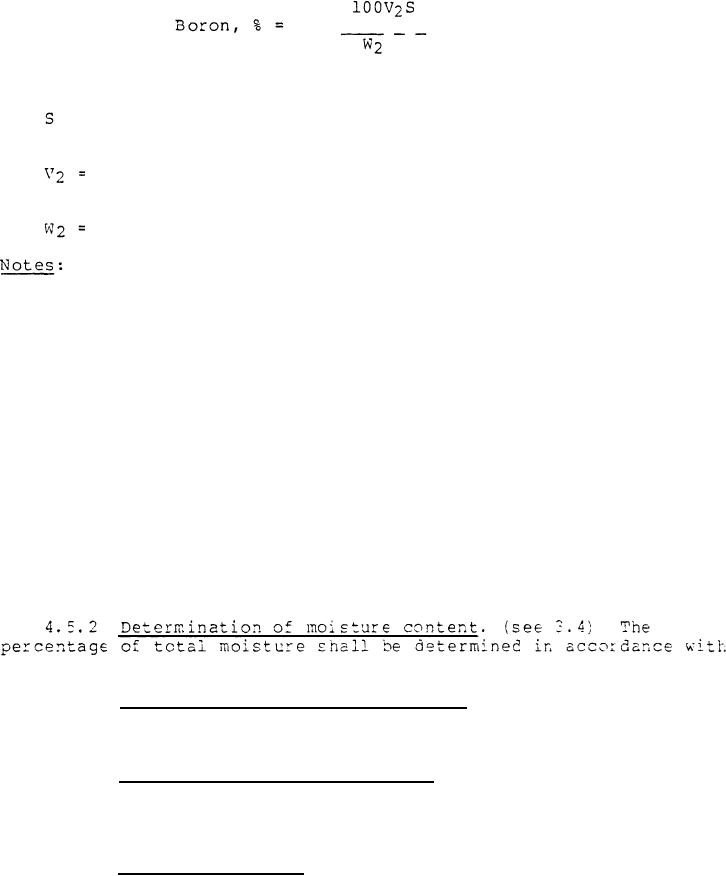 |
|||
|
Page Title:
Determination of total volatiles |
|
||
| ||||||||||
|
|  MIL-E-70610(AR)
Calculate the boron content of the sample as follows:
= Strength of barium hydroxide solution, mg. of boron per
ml. (see previous paragraph).
Volume of barium hydroxide solution required to titrate
the aliquot of sample solution, ml.
Weight of sample represented by the aliquot taken, mg.
It is not necessary to include a blank with each run of
1.
samples. Blank solution from a recent (within a few weeks) run may
be used provided that the quantity on hand is sufficient to
standardize the barium hydroxide solution.
2.
These temperatures may be attained on a Lindberg Type 2-2
electric hotplate, first with, and then without, a thickness of 1/8"
asbestos board.
3.
If the paper should assume the blue shade, wash down the
flask and reacidify with 1N hydrochloric acid solution as described
In later runs, decrease the volume of 2N sodium
subsequently.
hydroxide solution added at this point.
4. A vessel containing dry ice in contact with water makes a
satisfactory bath.
5
The use of a magnetic stirrer will facilitate subsequent
.
In the event that such a stirrer is used, bath housing
operations.
of the motor and the shielding of the pH meter should be connected
to ground.
Standard MIL-STD-286, Method 102.1.3.
(See 3.5) The total
4.5.3 Determination of total volatiles.
volatiles shall be determined in accordance with Standard
MIL-STD-286, Method 103.3.3.
The bu 1 k
(See 3.6)
4.5.4 Determination of bulk density.
density shall be determined in accordance with Standard MIL-STD-650,
Method 201.3, except that a sample weight of forty (40) grams shall
be used.
The 134.5C heat test
(See 3.7)
4.5.5 134.5C Heat test.
shall be performed as specified in Standard MIL-STD-286, Method
404.1.2.
14
|
|
Privacy Statement - Press Release - Copyright Information. - Contact Us |